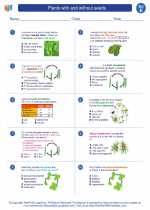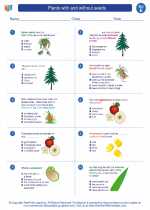Peripheral Nervous System
The peripheral nervous system (PNS) is one of the two main divisions of the nervous system, alongside the central nervous system (CNS). It consists of all the nerves and ganglia outside of the brain and spinal cord. The PNS is responsible for transmitting information to and from the CNS, allowing the body to interact with its external environment.
Anatomy of the Peripheral Nervous System
The PNS is divided into two main components: the somatic nervous system and the autonomic nervous system.
- Somatic Nervous System: This component controls voluntary muscle movements and receives sensory information from the external environment.
- Autonomic Nervous System: This component regulates involuntary processes such as heart rate, digestion, and respiratory rate. It is further divided into the sympathetic and parasympathetic nervous systems, which have opposing effects on these involuntary processes.
Functions of the Peripheral Nervous System
The PNS serves several important functions, including:
- Motor Function: Transmitting signals from the CNS to the muscles, allowing for voluntary movement.
- Sensory Function: Transmitting sensory information from the body's receptors to the CNS, allowing for the perception of touch, pain, temperature, and other sensations.
- Autonomic Function: Regulating and controlling involuntary bodily functions to maintain homeostasis.
Study Guide
When studying the peripheral nervous system, it's important to focus on the following key points:
- Understand the division of the PNS into the somatic and autonomic nervous systems, including their respective functions.
- Learn about the structure and function of neurons within the PNS, including sensory neurons, motor neurons, and interneurons.
- Explore the role of the PNS in both voluntary and involuntary bodily functions, and how it interacts with the CNS to coordinate these activities.
- Compare and contrast the sympathetic and parasympathetic divisions of the autonomic nervous system, and their effects on different organ systems.
By mastering these concepts, you can gain a comprehensive understanding of the peripheral nervous system and its vital role in the human body.
[Peripheral Nervous System] Related Worksheets and Study Guides:
.◂Science Worksheets and Study Guides Fifth Grade. Plants with and without seeds
Study Guide Plants with and without seeds
Plants with and without seeds  Worksheet/Answer key
Worksheet/Answer key Plants with and without seeds
Plants with and without seeds  Worksheet/Answer key
Worksheet/Answer key Plants with and without seeds
Plants with and without seeds  Worksheet/Answer key
Worksheet/Answer key Plants with and without seeds
Plants with and without seeds  Vocabulary/Answer key
Vocabulary/Answer key Plants with and without seeds
Plants with and without seeds  Vocabulary/Answer key
Vocabulary/Answer key Plants with and without seeds
Plants with and without seeds 

 Worksheet/Answer key
Worksheet/Answer key
 Worksheet/Answer key
Worksheet/Answer key
 Worksheet/Answer key
Worksheet/Answer key
 Vocabulary/Answer key
Vocabulary/Answer key
 Vocabulary/Answer key
Vocabulary/Answer key

The resources above cover the following skills:
Life Science
Obtain, evaluate, and communicate information to group organisms using scientific classification procedures.
Develop a model that illustrates how plants are sorted into groups (seed producers, non-seed producers) using data from multiple sources.